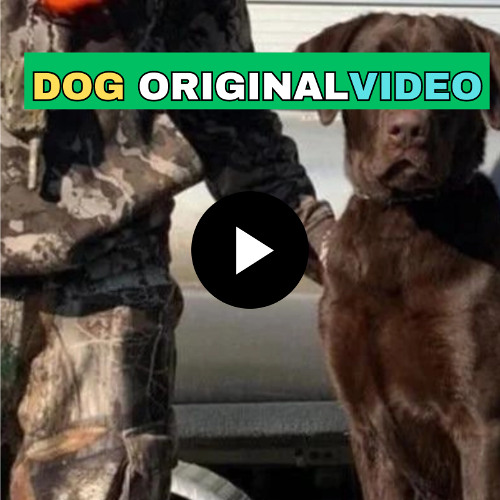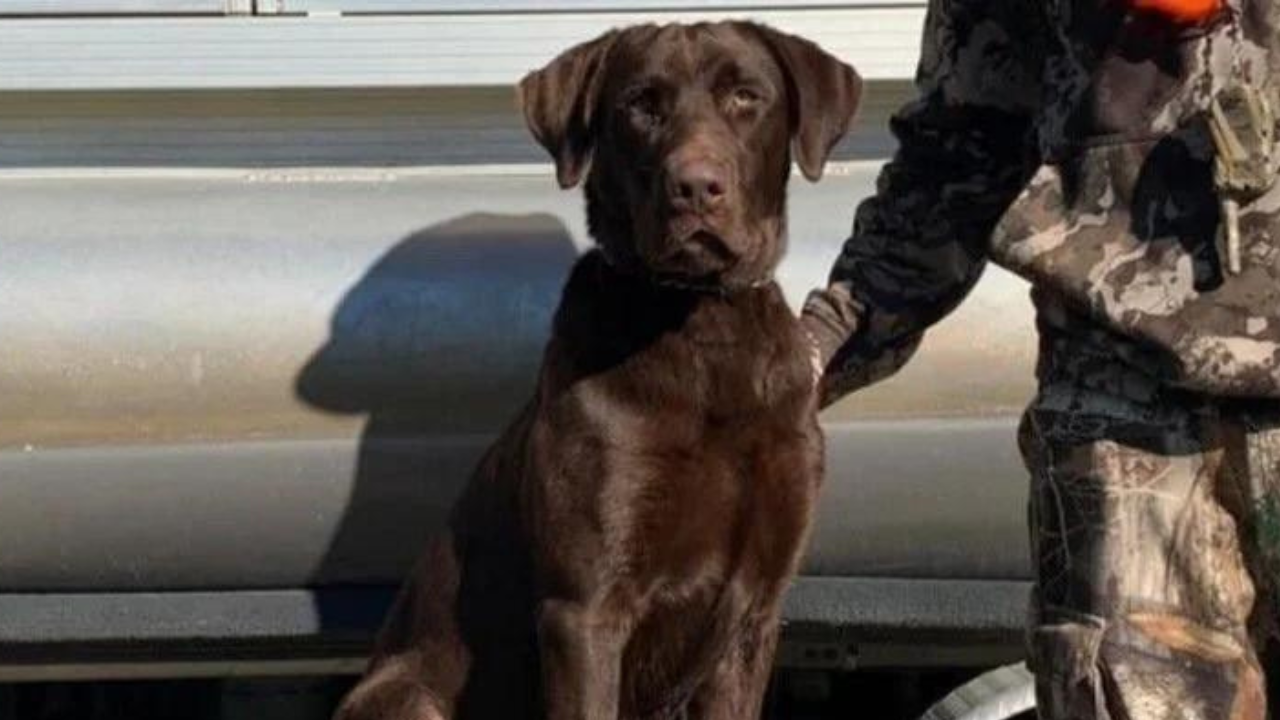Cole Prevost Dog Abuse Video: What You Need To Know & Updates
Can a single act of cruelty, captured on video, ignite a firestorm of public outrage and legal repercussions? The case of Cole Prevost, a Louisiana teen, and his alleged abuse of a hunting dog has done just that, raising critical questions about animal welfare, accountability, and the pervasive reach of social media.
The incident, which came to light in 2023, centers around a video purportedly showing Prevost violently beating his dog. The footage, which later went viral, sparked immediate condemnation and led to charges of animal cruelty. The incident quickly transformed from a local matter into a national discussion about the ethical treatment of animals and the legal consequences of such actions. This case highlights the profound impact of digital media on public perception and the speed with which incidents of alleged animal abuse can be disseminated and amplified across the globe.
The events surrounding the video's circulation paint a disturbing picture. Reportedly posted on Snapchat in 2023, the video shows Prevost seemingly frustrated with his dog's failure to respond to a command, leading to violent actions. The dog, believed to be a chocolate Labrador, is seen being struck in a pond during what appears to be a training exercise. Subsequent investigations and public outcry, fueled by the video's viral spread across platforms like TikTok and Facebook, further amplified the severity of the situation.
| Category | Details |
|---|---|
| Name | Cole Prevost |
| Age (at the time of incident) | 15 |
| Location (Incident) | Manchac Area, Tangipahoa Parish, Louisiana |
| Incident Date | 2023 (Video recorded) |
| Alleged Actions | Violently beating his hunting dog, allegedly after the dog failed to follow commands. |
| Charges | Animal Cruelty |
| Social Media Platforms | Snapchat, TikTok, Facebook |
| Animal Involved | Hunting Dog (Chocolate Labrador) |
| Legal Framework | Louisiana Animal Welfare Act 428 |
| Reference Link | Google Search Results |
The Tangipahoa Parish Sheriff's Office (TPSO) launched an investigation on Saturday, July 27th, after being alerted to the video's existence. This rapid response underscores the heightened awareness and responsiveness of law enforcement to animal cruelty allegations, especially those brought to light by social media. The video, which reportedly showed not only the abuse but also the presence of other individuals recording the incident, heightened the concern.
The legal framework in Louisiana, as defined by the Animal Welfare Act 428, underscores the responsibility of both animal owners and law enforcement to ensure environments free from animal harm. This legal foundation becomes the backdrop against which the case unfolds, emphasizing the importance of protecting animals and holding perpetrators accountable.
The impact of the video extends beyond the initial act of abuse. The online circulation has led to significant discussion. The incident also highlights broader concerns, including the importance of responsible pet ownership and the need for comprehensive animal welfare laws.
- Unveiling The Life And Influence Of Gracie Bonn Erome
- Ultimate Guide To Dylan And Cole Sprouse Childhood Stars To Hollywood Icons
The case of Cole Prevost serves as a potent reminder of the power of social media, its ability to expose wrongdoing, and its capacity to mobilize public opinion. It is a narrative about animal cruelty. It's a tale about the importance of holding individuals accountable for their actions and the ongoing battle to ensure the humane treatment of animals across the globe.
In a separate incident that demonstrates the prevalence and severity of animal cruelty, Robert Cole, a 23-year-old from Indianapolis, faced charges after a video showed him brutally beating his dog. This event, much like the Prevost case, underscores the urgency of addressing animal cruelty and providing support for animal welfare organizations.
The case against Robert Cole, which was brought to light by Indy Humane, highlights the tireless efforts of animal welfare organizations in rescuing and rehabilitating animals. Cole, according to reports, was caught on video beating his dog mercilessly. The incident underscores the need for more stringent animal protection laws and rigorous enforcement.
Cole's actions prompted a search warrant to be executed on his residence. The dog, which had initially been surrendered by Cole, was later taken into custody and returned to Indy Humane. The organization provided care and support to the victimized animal, working to ensure her recovery.
The incident surrounding Robert Cole's actions, as well as the case of Cole Prevost, is a call for action. It is a reminder that animal abuse is an ongoing and widespread issue. It is the duty of communities to speak up and report these instances. Law enforcement agencies must take swift and decisive action. Only then can we create safer and more compassionate environment for all animals.
The rise of social media has profoundly changed the way we perceive and react to instances of animal abuse. In the past, such events might have remained isolated or contained within a local community. Now, a single video can rapidly go viral, reaching millions of people within hours. This widespread dissemination brings with it the potential to mobilize public outrage, put pressure on law enforcement, and initiate legal action.
The cases discussed above, involving Cole Prevost and Robert Cole, clearly illustrate the power of social media in this context. The videos capturing the abuse served as undeniable evidence, which could not be ignored by authorities. The viral nature of the footage spurred immediate investigations, leading to arrests and charges.
Social media provides a platform for animal rights activists and organizations to share information, raise awareness, and advocate for stricter laws and harsher punishments. It enables these groups to connect with a vast audience.
However, the use of social media also presents challenges. The quick spread of information makes it easier for misinformation or biased narratives to spread, potentially complicating investigations and creating an atmosphere of distrust. Additionally, the constant barrage of graphic images and videos can be emotionally draining for those who are passionate about animal welfare.
Ultimately, the role of social media in the fight against animal cruelty is complex and multifaceted. It is a powerful tool for advocacy and awareness. But it requires responsible use and a critical approach to ensure that the message is accurate, effective, and constructive.
The legal and ethical considerations surrounding animal abuse are multifaceted. Laws vary across jurisdictions. Some countries and regions have more robust animal protection laws than others. Generally, these laws aim to prevent cruelty and provide recourse for animals that have been harmed.
These regulations typically establish standards of care, including provisions related to housing, food, water, and veterinary treatment. They also define actions that constitute cruelty, such as intentional harm, neglect, and abandonment. The penalties for violating these laws vary depending on the severity of the offense and the jurisdiction.
From an ethical standpoint, the debate often centers on whether animals have rights and how far those rights should extend. Some argue that animals, like humans, are sentient beings who deserve respect and protection from harm. They believe that animal abuse is morally wrong, regardless of whether it violates any specific laws. Others hold a more utilitarian view, arguing that animals should be treated humanely, but that human interests should take precedence.
The cases of Cole Prevost and Robert Cole highlight the complexities of both legal and ethical frameworks. The legal system provides the tools to hold abusers accountable, while ethical considerations raise broader questions about human responsibility for the well-being of animals. These cases demonstrate the intersection of law, ethics, and social responsibility.
Training methods used on animals are a frequent point of discussion. Traditional approaches, which may involve physical punishment or force, are increasingly being questioned. Animal welfare organizations and experts now recommend positive reinforcement techniques.
Positive reinforcement involves rewarding desired behaviors, such as with treats, praise, or toys. This method is based on the principle of operant conditioning. It focuses on encouraging good behavior. Negative reinforcement, on the other hand, entails removing something unpleasant, to reinforce a desired action.
The training methods used in the videos associated with Cole Prevost, which show the use of violence, are contrary to positive reinforcement. The use of violence is not only unethical. It can also be ineffective. It can lead to fear and anxiety in the animal, damaging the bond between the animal and the trainer.
Learning about positive reinforcement techniques is crucial for anyone who owns or trains an animal. Organizations like the American Society for the Prevention of Cruelty to Animals (ASPCA) and the Humane Society provide resources and training programs. They teach owners about how to build positive relationships with their pets and how to avoid causing them harm.
The cases of Cole Prevost and Robert Cole sparked online petitions. The petitions call for justice for the abused animals and seek tougher consequences for the perpetrators. These petitions are a powerful example of how concerned citizens can use the internet to advocate for change.
Online petitions work by collecting signatures from people who support a particular cause or demand. Once a significant number of signatures have been gathered, the petition is typically sent to relevant authorities. It is a way for individuals to express their views, show support for a cause, and put pressure on decision-makers.
In animal cruelty cases, petitions can demand that local authorities conduct thorough investigations. They can seek to ensure that the abused animals are given appropriate care. They can also call for harsher sentences for those found guilty of abuse.
Petitions are not always guaranteed to bring about immediate changes. They do serve as a way to raise awareness about animal abuse. They encourage public dialogue and create momentum for reforms. These are important steps in the fight against animal cruelty.
The cases of Cole Prevost and Robert Cole demonstrate the ongoing need to educate people about animal welfare and responsible pet ownership. Educational programs can help individuals understand their responsibility towards animals. They provide information about animal behavior, health, and training.
These programs can take many forms. They can be integrated into school curricula, community workshops, and online resources. Educational initiatives should focus on teaching people the importance of treating animals with respect, providing them with appropriate care, and recognizing signs of abuse or neglect.
Training in compassion is crucial, especially for young people, who are often the ones found guilty of animal cruelty. By learning about animal behavior and welfare, people can develop empathy. They can come to understand the value of animal lives. This awareness, in turn, can help prevent future cases of animal abuse.
The goal of these efforts is to create a more compassionate and humane society. It is about ensuring that animals are treated with the respect and care they deserve. Educational programs provide a crucial foundation for these important efforts.



Detail Author:
- Name : Jerome Lang
- Username : usauer
- Email : jodie.green@vonrueden.com
- Birthdate : 1990-08-03
- Address : 180 Robel Place Suite 885 Elvieton, WI 12403-7959
- Phone : 269.936.1583
- Company : Carroll and Sons
- Job : Electric Motor Repairer
- Bio : Enim omnis suscipit optio totam debitis. Odit voluptas magnam porro sit quod laboriosam saepe aut. Ipsam accusamus inventore non odit occaecati. Vero enim beatae voluptas.
Socials
facebook:
- url : https://facebook.com/howes
- username : howes
- bio : Exercitationem sit delectus qui ex occaecati.
- followers : 6914
- following : 1982
tiktok:
- url : https://tiktok.com/@sibyl32
- username : sibyl32
- bio : Unde esse aut provident aut quo a fugit.
- followers : 6248
- following : 1383
twitter:
- url : https://twitter.com/sibyl_howe
- username : sibyl_howe
- bio : Doloremque deleniti explicabo et et eum animi. Voluptas iusto sunt est quod. Quibusdam voluptatum et ut dolorum dolorum enim.
- followers : 1989
- following : 357